News
The Camera is Haunted: An Interview with Polaroid director Lars Klevberg
A haunted Polaroid camera kills everyone it photographs. This was the premise of a fifteen-minute short film called Polaroid, which was directed and written by Norwegian filmmaker Lars Klevberg, who made the short film for the express purpose of turning the concept into a feature. Klevberg’s wish has come true.

When it was screened in 2015, the short film quickly attracted Hollywood’s attention. Producer Roy Lee, known to genre audiences for the Grudge and Ring films, immediately recognized Polaroid’s feature potential. “When I saw the short film called Polaroid, I knew right away that it was a strong enough concept to develop into a feature film,” says Lee. “It takes a lot to scare me these days, because I’ve probably seen more horror movies and short films than anyone else in Hollywood, for work and as a fan of the genre. Polaroid scared me when I was watching it on my laptop in my office. I believed that if we could expand the short film into a full-length feature film, it would deliver an experience as scary as The Grudge or The Ring.”
Instead of hiring a new director to adapt Polaroid, Lee picked Klevberg. “I could tell right away that Lars was a talent whom I wanted to be in business with,” says Lee. “Lars came up with the concept and put together the amazing short film, so there was no one better suited to turn it into a feature. He was able to create a strong feeling of dread and tension in a limited amount of time in the short film, and I knew that it would be great to see what else he could accomplish with more screen time.”

The feature version of Polaroid, which was written by Blair Butler, tells the story of Bird Fitcher (Kathryn Prescott), a high school loner who takes possession of a vintage Polaroid camera. Bird soon discovers that the camera houses a terrible power: Everyone who has their picture taken by the camera meets a violent death. Bird and her friends race to solve the mystery of the haunted camera before it kills them.
In May, I had the chance to interview Klevberg about Polaroid, which was originally supposed to be released in August. Polaroid is now scheduled to be released on December 1, 2017.
DG: Lars, can you talk about the journey that you, and Polaroid, have taken over the past three years, from the production and release of the short film, to having your project optioned by Hollywood, and then the process of turning your short film into a feature, and now its imminent release?
LK: It has been a very busy year. I jumped on a plane in January to start a very short prep. We shot for twenty-five days, and then I touched ground in Norway, before I went to L.A to start the post-production, which is what I´m doing right now.
DG: Lars, when you made the short film, did you envision its feature potential, and how would you describe the process of turning a fifteen minute short film into a feature?
LK: Yes. When I wrote the script, I knew this had the potential to be picked up in Hollywood. So I already had a plan for it then. And it did. The core idea was very thrilling and scary. The process has been interesting indeed. When you’re working for Bob [Weinstein] and his team, you pretty much have to be prepared to saddle-up at any moment. Making the feature has been a faster process than the short, and that says a lot.
DG: Lars, for those who haven’t seen the short film, what are the biggest differences between the short film and the feature film, and what were the biggest challenges you faced in terms of transforming the short film into a feature length screenplay?
LK: In terms of bringing a short into a feature, the biggest challenge is always the story—the story and the characters. Then he was had to rebuild the mythology, in terms of the camera, and shape it as we moved forward with the story. Everything has to fit. The short film is very slow and suspenseful, and it doesn’t give away everything until the absolute last minute. I wanted to take that with me into the feature version.
DG: Lars, what did Blair Butler, who’s primarily known for her comedy writing, bring to this project that helped you conceptualize this as a feature, and maybe took the characters and story in directions that you never envisioned when you made the short film?
LK: Blair brought some human touches to Bird, the main character. These are small, almost invisible moments. This was very good and brought more depth to the character.
DG: Lars, how would you describe the journey that Bird Fitcher, the character played by Kathryn Prescott, takes in this film, in terms of the arc of her character and her relationship with the Polaroid camera?
LK: Bird is a very lovable protagonist. It was important for us to have a protagonist who presented this empathic and non egoistic human being without feeling forced, because she is the opposite of what the film is about. Having a protagonist with a back-story and multiple layers is something I always find interesting. Bird’s emotional back-story and personal interest is a big part of how she is capable of overcoming her biggest fear to date. The character is beautifully portrayed by Kathryn.
DG: How is the Polaroid camera introduced into the story, and what was your strategy, and what techniques did you use, in terms of presenting this camera, this object, as the villain of your film?
LK: We introduce the camera pretty early on in the film. The audience will quickly understand that this thing can generate some really horrifying moments. So when the camera ultimately ends up with Bird and her friends, the audience is already extremely alerted to the camera’s potential.
DG: Lars, is there a “clock” in the story, in terms of how much time Bird and her friends have to respond to the camera’s evil powers, and what are the “rules” in the film, in terms of how it attacks, and how, possibly, it can be defeated?
LK: Kind of. People are dying, and it won’t stop until Bird finds a way to stop it. I won’t go to specific about the rules, but it was important for us to create something menacing that was integrated into everything in the film. I’m talking about the theme, the symbols, premise, the technology, the society. Everything is neatly baked together to create something unique and horrifying.
DG: Lars, Polaroid has been compared to films like Final Destination and The Ring, and I was wondering if you think these comparisons are justified, and if there were other genre and stylistic influences that you brought to this story?
LK: Yes. I´m a huge fan of the Ju-On films. In making the short film, I wanted to go in that direction but add the Norwegian feel to it. Great horror films represent the society in different ways—The Ring, Alien etc. It was important to me that Polaroid represented something that we all can identify with. In Polaroid, it’s the narcissistic and selfish way we live. Posting pictures online, taking “selfies” and generally not connecting too much with the people around you. Emotionally. We live in a world with a lot of tools to get closer and be more social, but it kind of makes for the opposite. We become more isolated. We are heading towards something not good in terms of a self-imposing, narcissistic society.
DG: Lars, what was the stylistic and visual strategy that you and your cinematographer and production designer outlined for this film, and how did you achieve this, and how would you describe the atmosphere, look, and tone of the film?
LK: I´m a very visual storyteller. I like presenting ideas and emotions visually. I am a huge fan of the old way of shooting noir films, with hard contrast and low key lighting. I wanted to bring that into Polaroid together with the minimalistic approach of Edward Hopper. Trying to bring the art into Polaroid. Also, I looked at paintings from Caravaggio and Edward Munch, which was something that defined the look. I don`t dislike the gritty handheld design of most of the new horror films coming out, but I knew, pretty early on, that I would go for something different. There are a lot of direct references to famous paintings in the film, and you will find them if you are looking. Talking with Ken Rempel, the production designer, and Pål Ulrik Rokseth, my DP, we built a look around that. Watching Polaroid on the cinema, I´m pretty sure you will spot the big difference. Polaroid won’t look like its siblings.
DG: Lars, what was the biggest challenge you faced in making this film?
LK: The time to do it. The script was massive for its size. There were 136 scenes with a lot of action and forward momentum.
It was very, very challenging to get all of that considering the amount of locations, SFX, VFX and everything we had in our script.
DG: Lars, why did you film in Nova Scotia, Canada, instead of somewhere in America, and what are the main locations, settings, in the film?
LK: Dimension did The Mist there. It actually gave the perfect look for the film. I was really happy. It`s snowy, cold, and it just creates something different and visual. It reminded me of Norway, which gave the film something unique and interesting. The bad side was that I finally could make a Hollywood film but I didn’t get sun and palm trees. It was like Norway 2.0.
DG: Lars, as someone who grew up in Norway, I wonder if your teenage experience was relatable to that of Bird’s and her contemporaries, and the American high school/teenage experience as a whole, especially in terms of issues like bullying and peer pressure. Question: Was this something you had to adapt to, a major difference between your short film and this feature, and what is it about the high school experience that you think lends itself to the horror genre, most notably in Carrie, and now your film?
LK: No, not really. A director’s job is to create that. To be able to dive into people and places and do whatever’s necessary to understand that process. But I grew up with the American horror films taking place at school. Nightmare on Elm Street, The Faculty, Scream etc. I love those movies. Having the school setting is just a natural way of presenting your characters if you are not having them on vacation or it’s a weekend. But in Polaroid, the school gets a much bigger part than I expected. I loved going back to those places and create my own high school horror. Your question about Carrie is interesting. I think it has something to do with how we respond to the world and to our surroundings when we are at that age (high school). What we consider as premature problems when we get older can mean life and death at that stage, literally speaking. There’s a lot of insecurity. I also think many artistic creators have a lot of memories from High school, and many not good ones. They carry those memories with them throughout their life. When they get older and start writing or expressing their feelings, a lot of influence will probably come from those experiences. So that might be a reason for why there are so many stories told from that perspective.
Listen to the 'Eye On Horror Podcast'

Movies
Politician Spooked By ‘First Omen’ Promo Mailer Calls Police
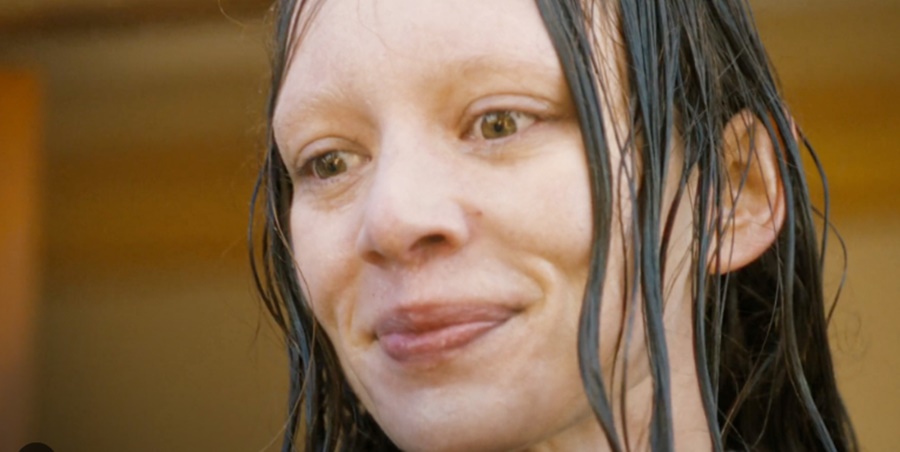
Incredibly, what some people thought they would get with an Omen prequel turned out to be better than anticipated. Maybe it’s partly due to a good PR campaign. Maybe not. At least it wasn’t for a pro-choice Missouri politician and film blogger Amanda Taylor who received a suspicious mailer from the studio ahead of The First Omen’s theatrical release.
Taylor, a Democrat running for Missouri’s House of Representatives, must be on Disney’s PR list because she received some eerie promo merch from the studio to publicize The First Omen, a direct prequel to the 1975 original. Usually, a good mailer is supposed to pique your interest in a film not send you running to the phone to call the police.
“I was freaking out,” says the blogger who filed a police report about #TheFirstOmen PR. “My husband touched it, so I’m screaming at him to wash his hands.” The studio, for its part, regrets frightening anyone but notes that “most people had fun with it” https://t.co/9vq7xfD8kI pic.twitter.com/9KUMgvyG2Q
— The Hollywood Reporter (@THR) April 13, 2024
According to THR, Taylor opened the package and inside were disturbing children’s drawings related to the film that freaked her out. It’s understandable; being a female politician against abortion it’s no telling what kind of threatening hate mail you’re going to get or what might be construed as a threat.
“I was freaking out. My husband touched it, so I’m screaming at him to wash his hands,” Taylor told THR.
Marshall Weinbaum, who does Disney’s public relations campaigns says he got the idea for the cryptic letters because in the movie, “there are these creepy drawings of little girls with their faces crossed out, so I got this idea to print them out and mail them to the press.”
The studio, maybe realizing the idea wasn’t their best move, sent out a follow-up letter explaining that it was all in good fun to promote The First Omen. “Most people had fun with it,” adds Weinbaum.
While we can understand her initial shock and concern being a politician running on a controversial ticket, we have to wonder as a film enthusiast, why she wouldn’t recognize a crazy PR stunt.
Perhaps in this day and age, you can’t be too careful.
Listen to the 'Eye On Horror Podcast'
News
A24 Joins Blockbuster Movie Club With Their Biggest Opening Ever
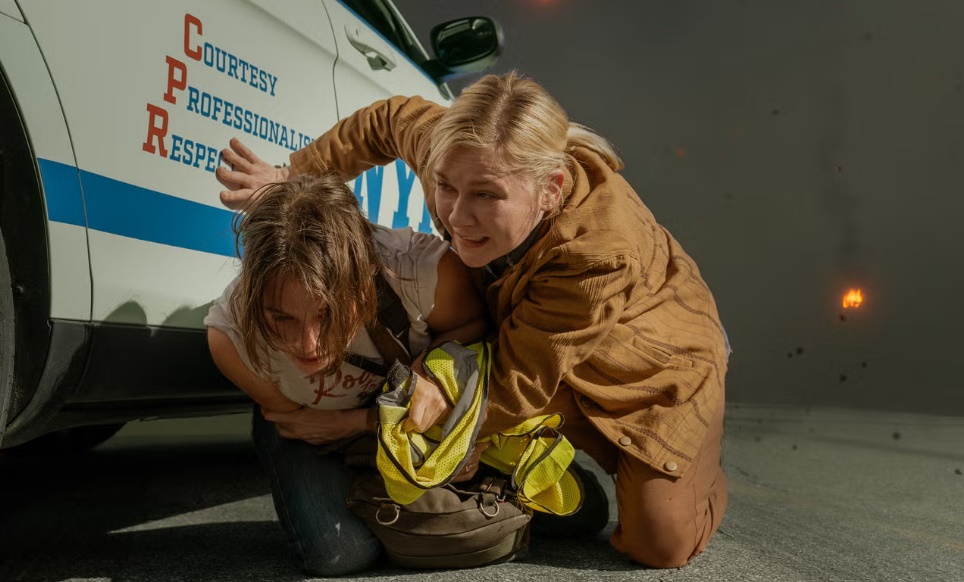
Everyone welcome A24 to the big leagues! Their latest film Civil War has broken a few records over the weekend. First, it’s the highest-grossing R-rated film of the year. Second, it’s the highest-grossing opening weekend A24 film ever.
Although reviews of the action film are polarizing, it certainly captured the curiosity of moviegoers. Even if the ambiguous screenplay didn’t blow them away, they seemed to find it entertaining. Furthermore, a lot of ticket buyers lauded the film’s sound design and IMAX presentation.
While not a straight-out horror movie, it does weave a thread on the hem of the genre thanks to its disturbing subject matter and graphic violence.
It’s about time A24 came out of the independent movie trenches and into the blockbuster category. While their features are embraced by a niche group, it was time they swung for the fences to generate a bigger payday to compete with behemoth studios such as Warner Bros. and Universal who have been making money hand over fist over the past few years.
While Civil War’s $25 million opening isn’t exactly a windfall in blockbuster terms it’s still solid enough in the mainstream movie-going climate to predict further success, if not by word of mouth, then by curiosity.
A24’s biggest money maker to date is Everything Everywhere All at Once with an over $77 million domestic haul. Then it’s Talk to Me with over $48 million domestically.
It’s not all good news. The film was made in-house for $50 million so if it tanks by week two, it could turn into a box office failure. That could be a possibility as the guys behind the Scream reboot, Radio Silence, will be on the marquee themselves for their vampire flick Abigail on April 19. That film has already generated some good buzz.
Even worse for Civil War, Ryan Gosling and Emma Stone’s own actioneer The Fall Guy is ready to usurp Civil War’s IMAX real estate on May 3.
Whatever happens, A24 has proven over the weekend that with the right subject matter, an increased budget, and a streamlined ad campaign, they have now entered the blockbuster chat.
Listen to the 'Eye On Horror Podcast'
News
Melissa Barrera Says Her ‘Scream’ Contract Never Included a Third Movie
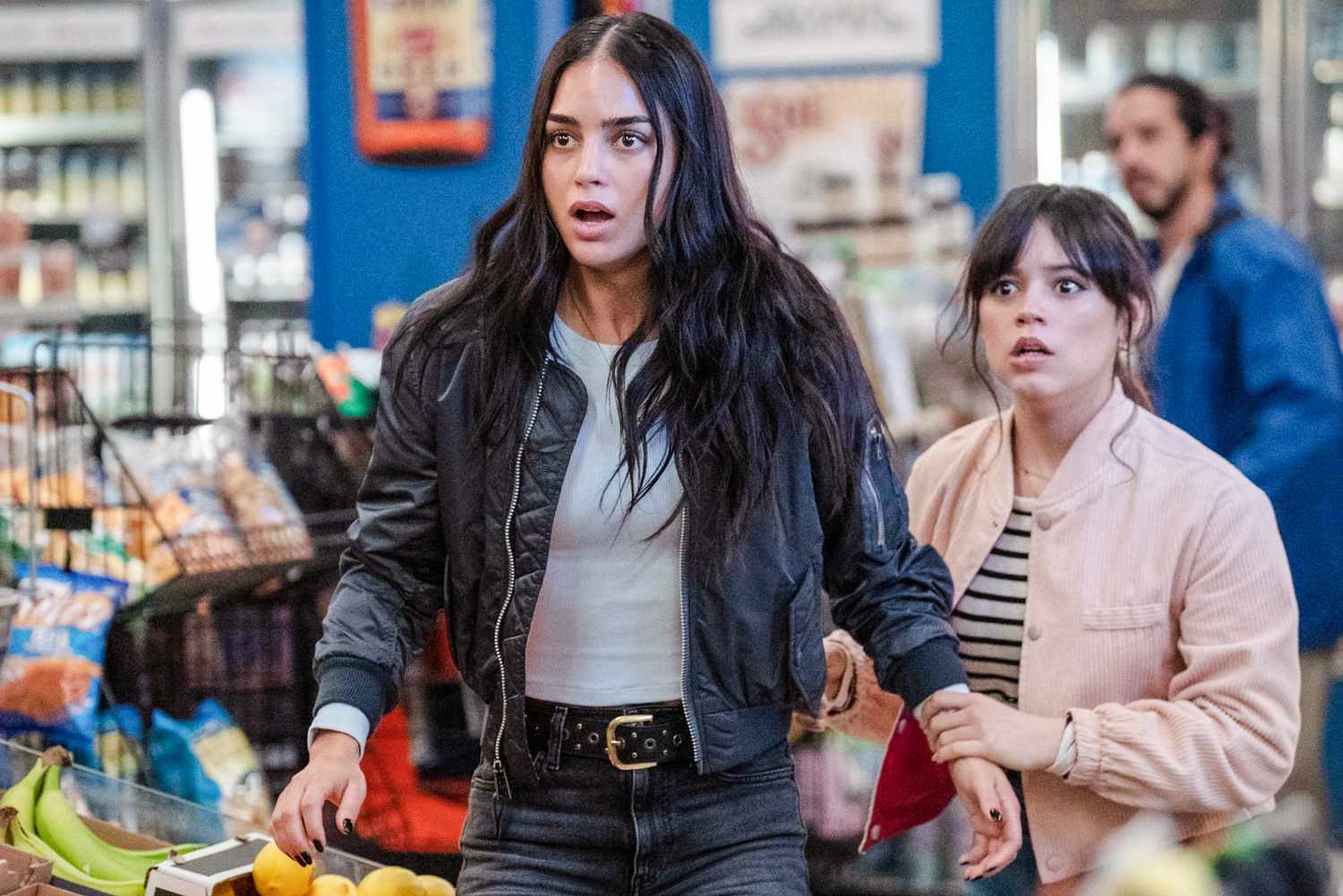
The Scream franchise has done a major overhaul to its original script for Scream VII after its two main leads departed production. Jenna Ortega who played Tara Carpenter left because she was overly booked and blessed while her co-star Melissa Barrera was fired after making political comments on social media.
But Barrera isn’t regretting any of it. In fact, she is happy where the character arc left off. She played Samantha Carpenter, the latest focus of the Ghostface killer.
Barrera did an exclusive interview with Collider. During their talk, the 33-year-old says she fulfilled her contract and her character Samantha’s arc finished at a good spot, even though it was meant to be a trilogy.
“I feel like the ending of [ Scream VI ] was a very good ending, and so I don’t feel like ‘Ugh, I got left in the middle.’ No, I think people, the fans, were wanting a third movie to continue that arc, and apparently, the plan was a trilogy, even though I was only contracted for two movies.
So, I did my two movies, and I’m fine. I’m good with that. I got two – that’s more than most people get. When you’re on a TV show, and it gets canceled, you can’t harp on things, you gotta move on.
That’s the nature of this industry too, I get excited for the next job, I get excited for the next skin I get to put on. It’s exciting to create a different character. So yeah, I feel good. I did what I set out to do. It was always meant to be two movies for me, ’cause that was my contract, and so everything is perfect.”
The entire production of the original seventh entry has moved on from the Carpenter’s storyline. With a new director and new script, production will resume, including the return of Neve Campbell and Courtney Cox.
Listen to the 'Eye On Horror Podcast'
-
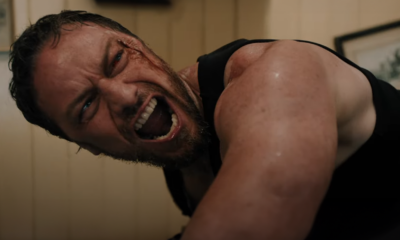
 Trailers5 days ago
Trailers5 days agoJames McAvoy Captivates in the New Trailer for ‘Speak No Evil’ [Trailer]
-
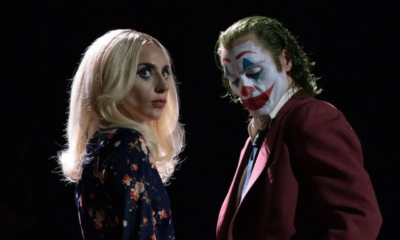
 Trailers7 days ago
Trailers7 days ago‘Joker: Folie à Deux’ Official Teaser Trailer Releases And Showcases Joker Madness
-
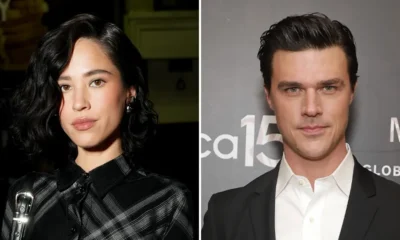
 Movies6 days ago
Movies6 days agoSam Raimi Produced Horror Film ‘Don’t Move’ Is Headed To Netflix
-
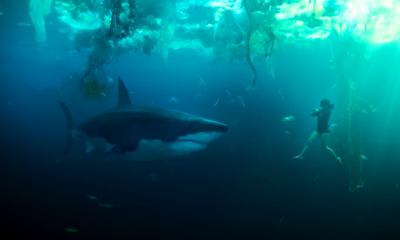
 Trailers4 days ago
Trailers4 days agoWatch the trailer for ‘Under Paris,’ the movie people are calling ‘French Jaws’ [Trailer]
-
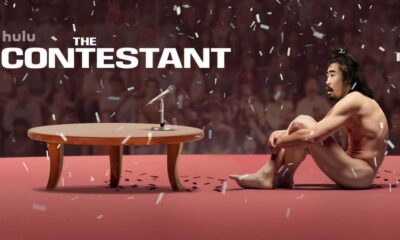
 Trailers6 days ago
Trailers6 days ago“The Contestant” Trailer: A Glimpse into the Unsettling World of Reality TV
-
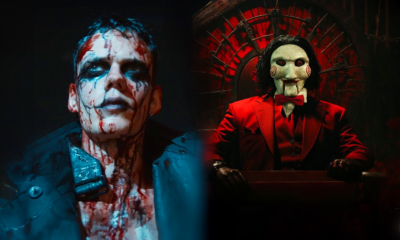
 News6 days ago
News6 days ago“The Crow” Reboot Delayed to August & “Saw XI” Postponed to 2025
-
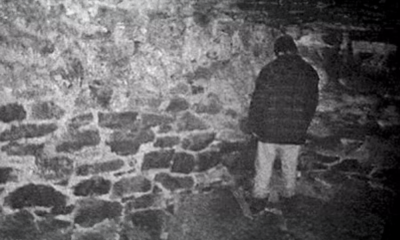
 Movies6 days ago
Movies6 days agoBlumhouse & Lionsgate to Create New ‘The Blair Witch Project’
-
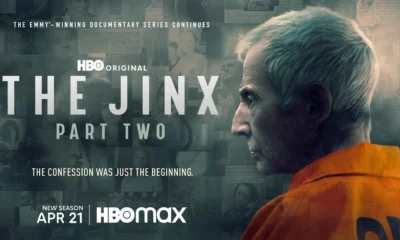
 Trailers6 days ago
Trailers6 days agoHBO’s “The Jinx – Part Two” Unveils Unseen Footage and Insights Into Robert Durst Case [Trailer]
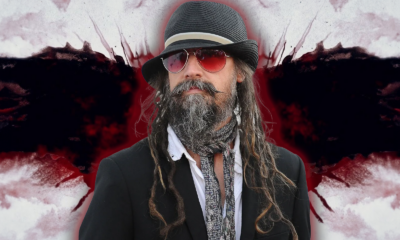

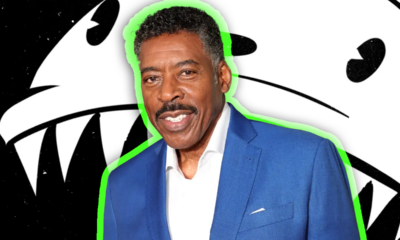













You must be logged in to post a comment Login